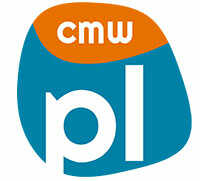What Is Business Process Management Software?
Business Process Management Software (BPMS) is a form of technology that helps businesses simplify and optimize their operations. It is a comprehensive system for automating and managing a company's whole process, from original design and modeling to execution and monitoring. At its foundation, BPMS simplifies complicated business processes by breaking them down into manageable phases.
This enables users to find inefficiencies, bottlenecks, and opportunities for improvement, resulting in a more efficient and productive workflow. One of the most important advantages of BPMS is its capacity to automate manual operations, which eliminates the need for time-consuming and error-prone manual processes. This not only saves time and improves production, but it also lowers the possibility of human error.
Furthermore, BPMS serves as a common store for all process-related data, enabling real-time insight and transparency into the state and progress of processes. This enables decision-makers to analyze and monitor key performance indicators (KPIs) and make more informed decisions to improve business processes. Another key benefit of BPMS is its adaptability and scalability.
As company demands change, the software may adapt and expand alongside the organization, allowing for new processes and modifications without affecting the entire system. With a variety of user-friendly features, BPMS enables enterprises to achieve process optimization and efficiency, resulting in increased agility, cost savings, and more customer satisfaction.
Finally, investing in a BPMS can help firms stay ahead of the competition by improving processes, lowering costs, and providing a better experience for staff and consumers. When selecting a BPMS, it is critical to analyze features, integration possibilities, and customer service in order to get the best solution for your individual business requirements.
What Are The Recent Trends In Business Process Management Software?
Business Process Management (BPM) software has revolutionized how firms streamline and optimize their business operations. BPM software trends and developments move in lockstep with technology. In this buyer's guide, we'll look at recent trends in BPM software that you should be aware of before making a purchase.
1. Cloud-Based Solutions: Because of the flexibility, scalability, and cost-effectiveness of cloud-based BPM software, an increasing number of enterprises are choosing it. With the development of remote work and the demand for collaborative tools, cloud-based BPM software enables teams to access and work on processes from any location, at any time.
2. Process Automation: Automation is a major trend in the BPM software industry. With rising competition and the demand for shorter turnaround times, businesses are turning to BPM software to automate repetitive and time-consuming operations. This not only increases efficiency but also lowers the likelihood of human error.
3. Artificial Intelligence (AI) and Machine Learning (ML): The use of AI and ML in BPM software is rapidly gaining traction. These tools can analyze massive amounts of data, detect patterns, and provide data-driven recommendations for process changes. This can help firms make data-driven decisions and reduce procedures even more.
4. Low Code/No Code Platforms: In recent years, the introduction of low code/no code platforms has made BPM software more user-friendly. These platforms enable users with little or no coding skills to build and develop their own unique procedures. This gives enterprises greater control and flexibility over their business processes.
5. Integration With Other Systems: BPM software is increasingly being integrated with other systems, such as Customer Relationship Management (CRM) and Enterprise Resource Planning (ERP). This integration enables the seamless flow of data between systems, decreasing the need for human data entry and errors.
6. Mobile And Collaborative Capabilities: As remote work and mobile devices gain popularity, BPM software has begun to include mobile and collaborative features. This enables team members to access procedures and documents via their preferred devices, allowing for real-time collaboration and communication.
7. Emphasize Customer Experience: Customer experience has been a primary priority for businesses, and BPM software is no different. The latest BPM software has customer journey mapping features, which allow firms to discover areas for improvement in customer interactions and simplify operations accordingly.
Benefits Of Using Business Process Management Software
Business Process Management (BPM) software is a powerful tool that enables firms to optimize and manage their business processes, resulting in enhanced efficiency and production. In today's fast-paced business world, organizations must automate and optimize their operations in order to remain competitive.
we'll look at the top benefits of utilizing BPM software and how it may help your company prosper.
1. Improved Process Efficiency: One of the primary advantages of adopting BPM software is the increased process efficiency it provides. By automating manual tasks and optimizing processes, BPM software lowers errors and delays, resulting in faster and more efficient operations. This not only saves time but also boosts business effectiveness.
2. Increased Productivity: BPM software enables firms to create and implement processes that are in line with their company goals and objectives. Employees can focus on their jobs and responsibilities when there is a clear process and established procedures in place, resulting in higher production. Furthermore, the automated aspects of BPM software relieve employees of tedious and repetitive chores, allowing them to concentrate on more vital and value-adding operations.
3. Improved Visibility And Control: BPM software has real-time monitoring and reporting capabilities, offering enterprises greater visibility and control over their processes. It enables managers to detect bottlenecks and inefficiencies, make data-driven decisions, and implement adjustments to ensure continuous improvement. This level of control and transparency guarantees that processes function smoothly and allows firms to stay on top of any issues that develop.
4. Cost Savings: BPM software enables firms to remove unproductive tasks and streamline processes, resulting in cost savings. BPM software lowers operating expenses significantly by automating manual operations and lowering the possibility of errors. It also helps firms reduce the cost of correcting errors and rework, resulting in additional savings.
5. Compliance And Risk Management: Organizations must adhere to compliance and risk management standards, particularly in highly regulated industries. BPM software guarantees that processes adhere to regulatory rules and standards, lowering the risk of penalties and fines. It also provides audit trails and reports that allow firms to demonstrate their compliance efforts to regulators.
6. Scalability: As firms expand, their procedures become more complicated, making it difficult to manage them manually. BPM software enables enterprises to easily scale their operations as their business grows without disruption. The software enables rapid and easy adjustments to processes, making it highly responsive to changing corporate needs.
Important Factors To Consider While Purchasing Business Process Management Software?
When it comes to choosing Business Process Management (BPM) software, buyers should examine three key elements to make an informed purchase. Here are some important aspects to keep in mind when assessing various BPM software options:
1. Functionality: The first and most important element to evaluate is the functionality of the BPM software. It should meet your business requirements and be able to handle the complexities of your processes. Check for features such as process modeling, automation, collaboration, reporting, and analytics to ensure that the software can successfully support your business operations.
2. Scalability: As your firm grows, your BPM requirements may vary. As a result, it's critical to choose software that is scalable and can meet your future needs. Make sure the program can manage a significant amount of data and can be quickly integrated with other systems if necessary.
3. User-Friendly Interface: Any software's acceptance and success are dependent on its usability. You want your BPM software to be simple to use and comprehend for all of your staff, including non-technical people. To ensure a seamless user experience, look for easy interfaces, drag-and-drop functionality, and configurable dashboards.
4. Customization Options: Because each organization has its own set of procedures and requirements, selecting BPM software that allows for customization is critical. This allows you to modify the software to your individual requirements rather than needing to follow a pre-set framework. Look for options such as custom workflows, forms, and reports.
5. Integration Capabilities: A good BPM program should be able to work easily with your current systems, such as CRM, ERP, or HR software. This ensures that your processes flow seamlessly between departments, minimizing the need for manual data entry and lowering the chance of errors.
6. Assistance And Training: Implementing new software can be difficult, so find a vendor who offers excellent customer assistance and training. Look for vendors that provide onboarding assistance, continuous support, and extensive training materials and tools.
7. Security And Compliance: As data breaches become more regular, it's critical to use BPM software that prioritizes security. Look for software that includes data encryption, access control, and other security measures to safeguard your important business information. Additionally, if your industry has unique compliance needs, ensure that the software fulfills those criteria.
8. Pricing: The cost of BPM software can vary substantially, so it's crucial to understand what you're paying for. Look for price structures that are transparent, and take into account any additional fees for customization, training, and ongoing support. It's also a good idea to compare costs from several sellers to ensure you're getting the best deal for your money. Keeping these crucial elements in mind allows you to analyze various BPM software solutions and make an informed decision that matches your company's specific demands. Remember to include your team in the decision-making process to ensure that the software meets their requirements and can help enhance efficiency and productivity inside your firm.
What Are The Key FeaturesTto Look For In Business Process Management Software?
When deciding on the best Business Process Management (BPM) software for your firm, there are a few crucial elements to consider. These elements have a significant impact on the effectiveness and efficiency of your company processes, thus they should be carefully evaluated.
In this buyer's guide, we'll go over the key features to look for in BPM software and why they're crucial.
1. Process Modeling And Automation: The primary purpose of BPM software is to model, automate, and execute business processes. This enables you to map out your current operations, discover inefficiencies, and optimize them to achieve optimum efficiency. Look for BPM software that has straightforward and user-friendly process modeling tools, as well as the capacity to automate activities and processes. This will streamline your procedures, saving you time and resources.
2. Integration & Compatibility: BPM software should work easily with your existing systems and apps. It should also work with a variety of devices and platforms, allowing you to access and manage your operations from anywhere. Look for software that provides a variety of integration options, such as APIs and web services, to guarantee seamless data transmission between systems.
3. Reporting And Analysis: Effective BPM software should provide strong reporting and analytics features. This enables you to monitor and evaluate your operations in real time, discover bottlenecks, and make data-driven decisions to increase productivity. Look for software that includes customisable dashboards and real-time analytics to have a better knowledge of your processes.
4. Collaboration And Communication: BPM software should let team members collaborate and communicate during a process. This enables better coordination, faster decision-making, and increased production. Look for tools such as task assignment, comments, and instant messaging to keep everyone on the same page and communication flowing smoothly.
5. Security & Compliance: With sensitive corporate data being saved and transmitted via BPM software, security is an important component to consider. Look for software that includes several layers of security, such as user authentication, access controls, and data encryption. Compliance with industry standards such as GDPR and HIPAA should be a top priority.
6. Scalability: Your business processes will change over time, so choose BPM software that can adapt to your needs. Look for software that has scalability options, such as adding more users, workflows, and data storage, to meet your future requirements.
7. User-Friendly Interface: A user-friendly interface is required to ensure that all team members may easily embrace BPM software. Look for software with a clear and easy-to-use interface, customisable dashboards, and drag-and-drop features for process control.
Why Do Businesses Need Business Process Management Software?
In today's fast-paced and competitive corporate environment, efficiency and effectiveness are critical. Businesses must streamline their operations, increase efficiency, and deliver consistent, high-quality outputs. Here's where Business Process Management (BPM) software comes in. BPM software is a technology-based solution that assists businesses in optimizing their processes by automating and managing them in a systematic and structured manner.
It lets businesses to describe, model, execute, and monitor their processes, resulting in increased efficiency, transparency, and error-free performance. One of the primary reasons firms want BPM software is to minimize manual and paper-based operations. These traditional procedures not only take a lot of time and resources, but they also allow for human mistake.
Businesses that automate their processes with BPM software can reduce errors, paperwork, and save important time. BPM software enables firms to standardize their operations across departments and locations, assuring consistency and uniformity. This enables seamless communication and collaboration among teams, resulting in better decision-making and faster task completion.
Furthermore, BPM software offers real-time visibility and reporting, enabling firms to analyze processes and detect bottlenecks and inefficiencies. This data-driven strategy enables businesses to make data-driven decisions, streamline operations, and increase overall performance. In addition to process optimization, BPM software provides compliance management features.
It enables organizations to comply with regulatory regulations and internal policies, lowering the risk of penalties, fines, and legal ramifications. Finally, with the rapid progress of technology and changing market demands, firms must be agile and adaptable. BPM software provides the flexibility and scalability required to handle evolving processes and grow with the organization.
How Much Time Is Required To Implement Business Process Management Software?
The implementation time for Business Process Management (BPM) software can vary based on a number of factors, including the complexity of business processes, the size of the organization, the level of customization required, and the software's adoption rate among employees. However, on average, the implementation process can take between a few weeks and a few months.
The first step in installing BPM software is to thoroughly analyze existing business processes and find areas for improvement. This process may take many weeks, depending on the organization's size and complexity. Next, the program must be configured and modified to meet the organization's specific requirements.
This can take anything from a few weeks to a few months, depending on how much customization is required. It is critical to involve all essential stakeholders at this stage to ensure that the software is personalized to match the organization's specific needs. Once configured, the program must be integrated with the organization's other systems and applications.
This integration procedure can take many weeks and may necessitate the involvement of IT professionals. The final phase is to train and adopt the software by the workforce. This process can take a few weeks because personnel must be instructed on how to utilize the program properly. Organizations that invest in effective training and change management practices typically have a smoother and faster adoption rate.
What IsThe Level of Customization Available In Business Process Management Software?
Business Process Management (BPM) Software allows businesses to streamline their operations, automate tasks, and manage workflows efficiently. One key aspect of BPM software is its ability to be customized to fit the specific needs of a business. In this buyer's guide, we will explore the level of customization available in BPM software and how it can benefit your organization.
Customization options in BPM software can vary depending on the provider and the specific features of the product. However, most reputable providers offer a wide range of customization options to cater to different business requirements. These can include custom workflows, forms, reports, and integrations with other tools and systems. One of the main benefits of customizing BPM software is the ability to tailor the solution to your unique business processes.
This means you can design workflows that mirror your current processes, rather than having to conform to a pre-set structure. This helps to improve efficiency and productivity as your team can work with a system that they are familiar with and comfortable using. Another benefit of customization is the ability to add or remove features as needed.
BPM software often comes with a wide range of features, but not all may be relevant to your business. With customization, you can select the features that are essential to your operations, making your BPM software more efficient and user-friendly. The level of customization available also extends to the design and user interface of the software. Most providers offer the option to brand and customize the interface to align with your company's branding.
This helps to create a more seamless user experience for your team, making it easier for them to navigate and use the software. Furthermore, BPM software can also be customized to meet specific security and compliance requirements. This is particularly important for businesses that handle sensitive data or operate in highly regulated industries. Customization allows for greater control over security measures, such as access levels and encryption, to ensure the protection of your data.
Which Industries Can Benefit The Most From Business Process Management Software?
Business Process Management (BPM) Software is a strong tool that may help firms in a wide range of industries. Its capacity to streamline and automate company processes can result in better productivity, lower costs, and higher customer satisfaction. In today's fast-paced and competitive business environment, BPM software has become an essential investment for businesses seeking to stay ahead of the competition. So, what industries will profit the most from this software? Let's have a closer look.
1. Financial Services Business: The financial services business handles large amounts of complicated data and transactions on a daily basis. BPM software enables financial firms to automate operations such as loan approval, account opening, and claims administration, resulting in higher accuracy and shorter response times. This not only enhances the client experience, but it also helps businesses meet stringent regulatory standards.
2. Healthcare Industry: BPM software can help streamline processes including patient registration, appointment scheduling, and insurance claims processing. This not only increases the efficiency of the healthcare institution, but it also improves the patient experience by lowering wait times and errors.
3. Manufacturing Industry: BPM software may help the manufacturing industry by automating and improving operations including supply chain management, inventory control, and production planning. This reduces costs, improves resource allocation, and increases production efficiency.
4. Retail Industry: BPM software can help to streamline processes like inventory management, procurement, and order fulfillment. This not only improves the overall supply chain, but it also increases customer satisfaction by reducing delivery times and ensuring proper order processing.
5. Telecoms Industry: In today's digital age, telecoms companies are seeing rising demand for their services. BPM software can help these businesses manage their client orders, service activations, and billing processes more efficiently, resulting in more customer satisfaction and lower operational expenses.
6. Government And Public Sector: The government and public sector deal with a wide range of complex processes that necessitate stringent compliance and accountability. These firms can use BPM software to automate procedures like licensing, permit applications, and procurement, resulting in increased transparency, accountability, and citizen satisfaction.
Conclusion
To summarize, investing in Business Process Management software can significantly help your company by streamlining procedures, increasing efficiency, and productivity. When making your decision, consider your specific business objectives, price, and the software's user-friendliness. You can find the best fit for your firm by conducting thorough study and comparing several possibilities.
Take the time to compare the many features and functionality provided by different BPM software, such as automation capabilities, integration with other systems, and customization choices. It is also vital to assess the amount of customer support and training offered by software vendors. Also, remember to involve key stakeholders and staff in the decision-making process.
Their suggestions and opinions can help you choose software that suits their needs and preferences, resulting in a smoother implementation and uptake. Finally, keep in mind that BPM software is a long-term investment that will improve your company operations. To react to changing business needs, ensure that your procedures and software are reviewed and updated on a regular basis.
By following these guidelines and using an informed approach, you can make an informed selection and select a BPM software that can propel your company to success. We hope this guide has provided you with enough knowledge to make the best decision for your organization.






















